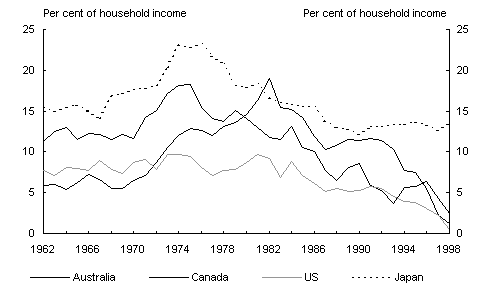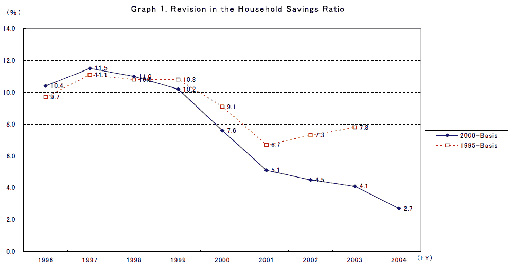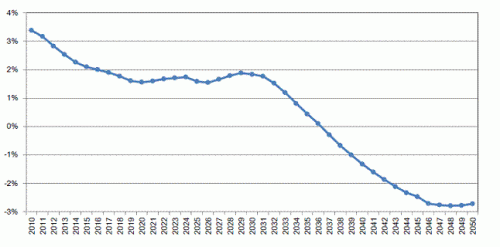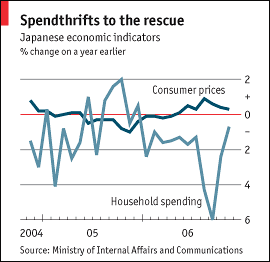Japan has traditionally had a high savings ratio, but, in past decade the savings ratio has fallen to be close to European / US levels.
Graph showing Japan Savings Rates

Since 1998, though Japanese saving rates have declined.

The graph is a bit hard to read, but, since 2004, Japanese saving rates have been at 2.5- 3.0%
Currently saving rates in Japan are just under 3%.
Why Has Japanese Saving Rates fallen?
- Ageing Population. Old people run down savings
- Increase in retirement age and greater security about state provision for old people
- Changing attitudes of increased demand for current spending rather than passing it on to next generation.
- Upgrading of housing which leads to higher imputed rents.
- Increase in state retirement age to 65
- Prospects of an economic upturn in the mid 2000s encouraging higher consumer spending.
- Stagnant growth in real incomes for some of this period meant even though savings were falling consumer spending was low.
For more detail and explanation see this pdf and pdf2
Forecast for Japanese Saving Rates

Predicted Japanese household saving as a percentage of GDP. Source: Hoshi and Ito (2012).
The bad news is that with an ageing population, the saving rate is forecast to decline further.
Consumer spending in Japan
Even though saving rates in Japan have fallen. Consumer spending still accounts for a low % of GDP compared to other countries. In 2005, consumption accounted for 55% of GDP – compared to 66% in the UK
During the early 2000s, Japanese consumer spending was struggling to remain positive.

Sources of Graphs:
Related

Hello, thanks for this information. What is your source data for the above charts?
Same for me. Could you tell me the source of the data, especially the saving rate?
Could I also get the source for the savings data? Or do you have it in an xls format?
Thanks
Thank you very much for your best sharing.
I’m interesting a lot with economic in Japan and follow the way how it going up.
That’s good new if you compare with all the problems another country in this crisis period.